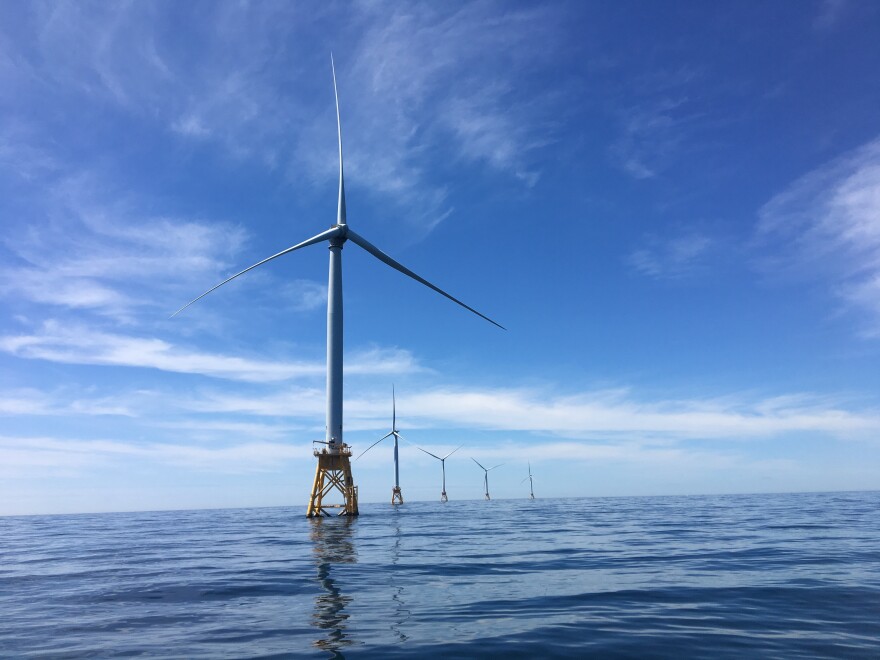Five offshore wind companies, all with leases to build wind farms off the New England coast in the next ten years, have agreed on a uniform turbine layout. But fishing industry representatives say the turbines will be too closely spaced for safety.
Offshore Wind Companies Equinor, Orsted/Eversource, Mayflower Wind, and Vineyard Wind proposed the uniform turbine layout, hoping to mitigate some of the pushback they've gotten from fishing groups.
The plan calls for mile-wide spacing between turbines, and states that turbines will be uniformly oriented in east-west rows and north-south columns.
"This uniform layout is consistent with the requests of the region’s fisheries industry and other maritime users," a press release from the five companies stated. "In addition, independent expert analysis provided to the USCG confirmed that this uniform layout would provide for robust navigational safety and search and rescue capability by providing hundreds of transit corridors to accommodate the region’s vessel traffic."
Some fishing groups say the plan is still not meeting their needs. Meghan Lapp of Seafreeze Limited, a large trawling company based out of Rhode Island, said large vessels need a minimum of four nautical miles between turbines in order to transit the area due to the way navigation radar interacts with wind turbines.
"The fishing industry was very adamant that at the very very minimum, you should have four nautical mile spacing for a transit lane," Lapp said. "If you had small turbines that gave you a mile and a half of radar interference on either side of you, you'd basically have one mile in the middle where you can see."
She worried that with the larger turbines that are now being considered by many of these companies, radar interference could be even worse and require even wider spacing.
She added that previous plans had included larger transit lanes, but this new plan means none of Seafreeze's large vessels would be able to use the areas for travel.
"It removes really the potential for a lot of transit. The squid industry does not expect to be able to fish in the windfarm, but people were hoping for transit lanes for the wind farm to get through to other places, which now has basically been taken away from them," she said.
The companies said in their press release that studies have shown that ships as long as 400 feet can safely transit in one-nautical mile wide corridors. They've submitted this layout plan to the U.S. Coast Guard for review, but Lapp hoped that fishing groups would have a chance to comment before the plan was made final.







